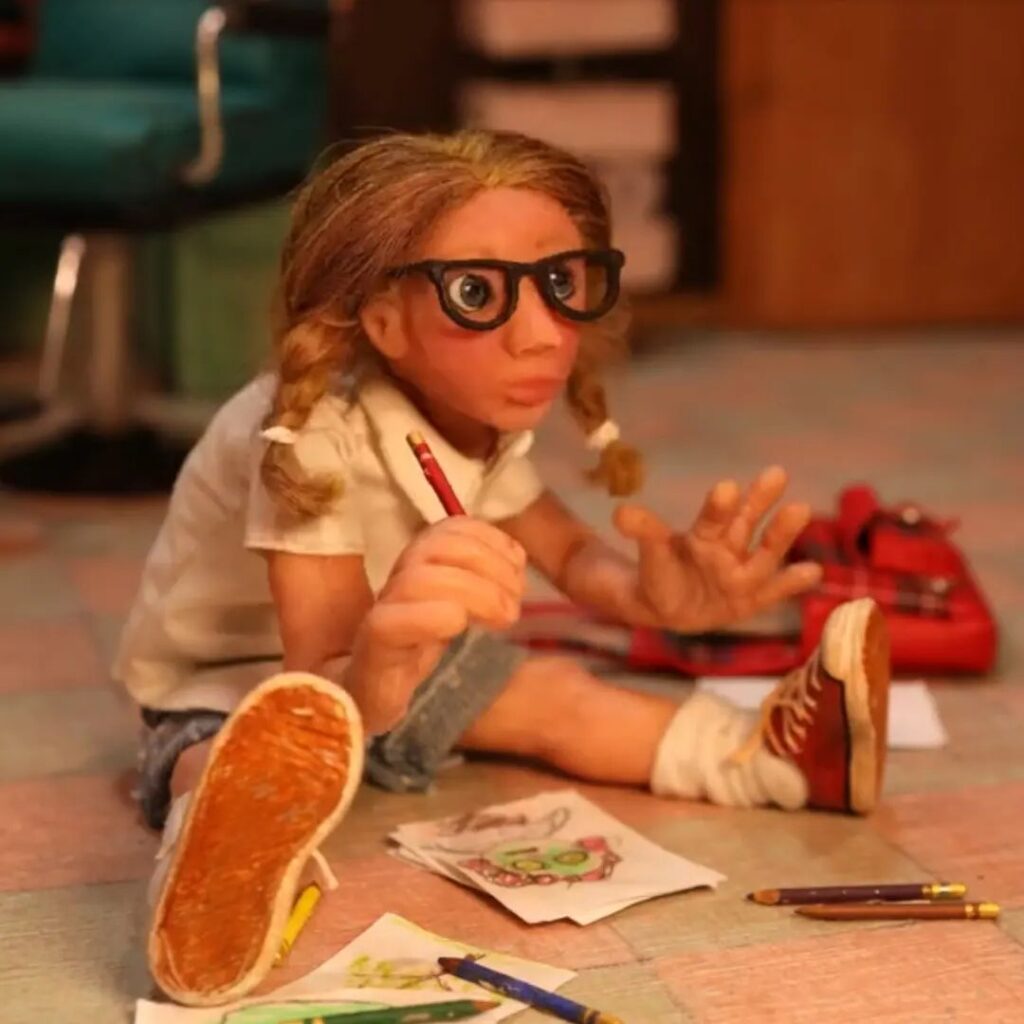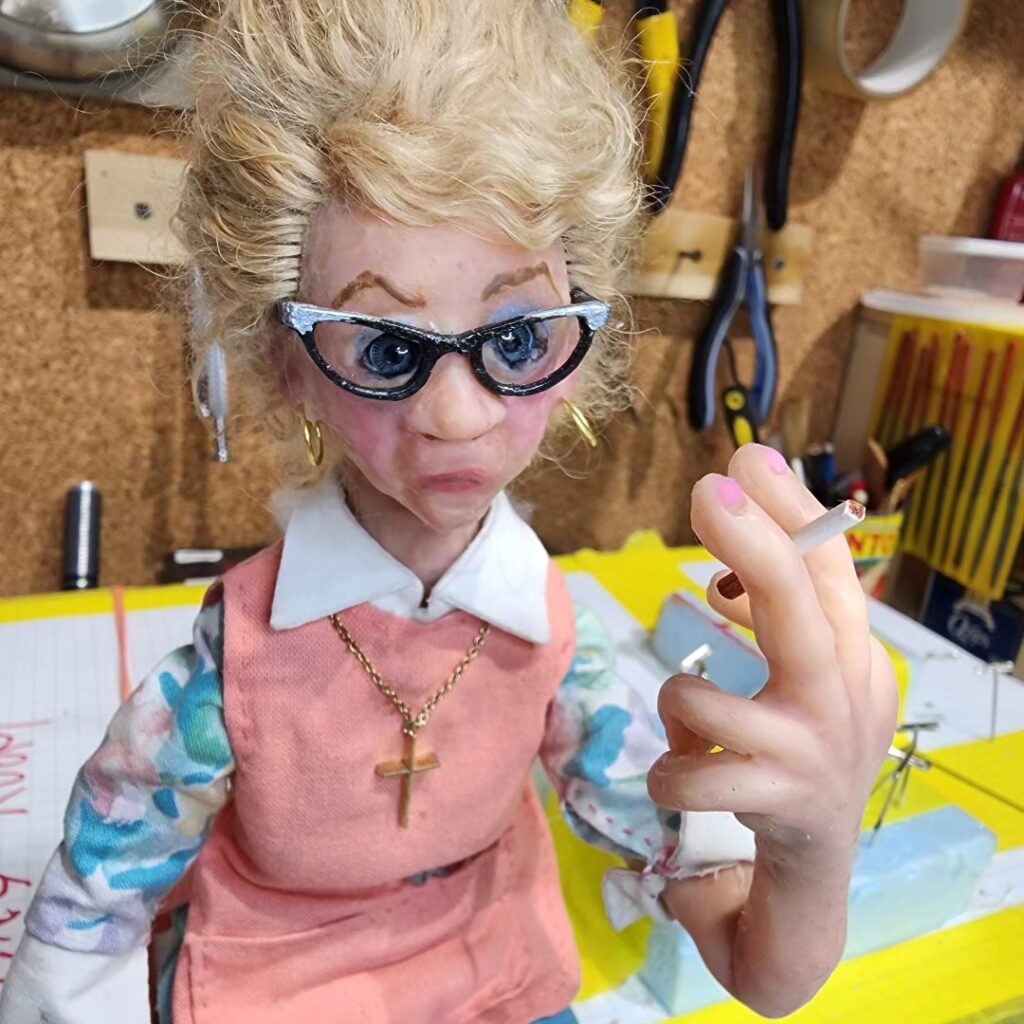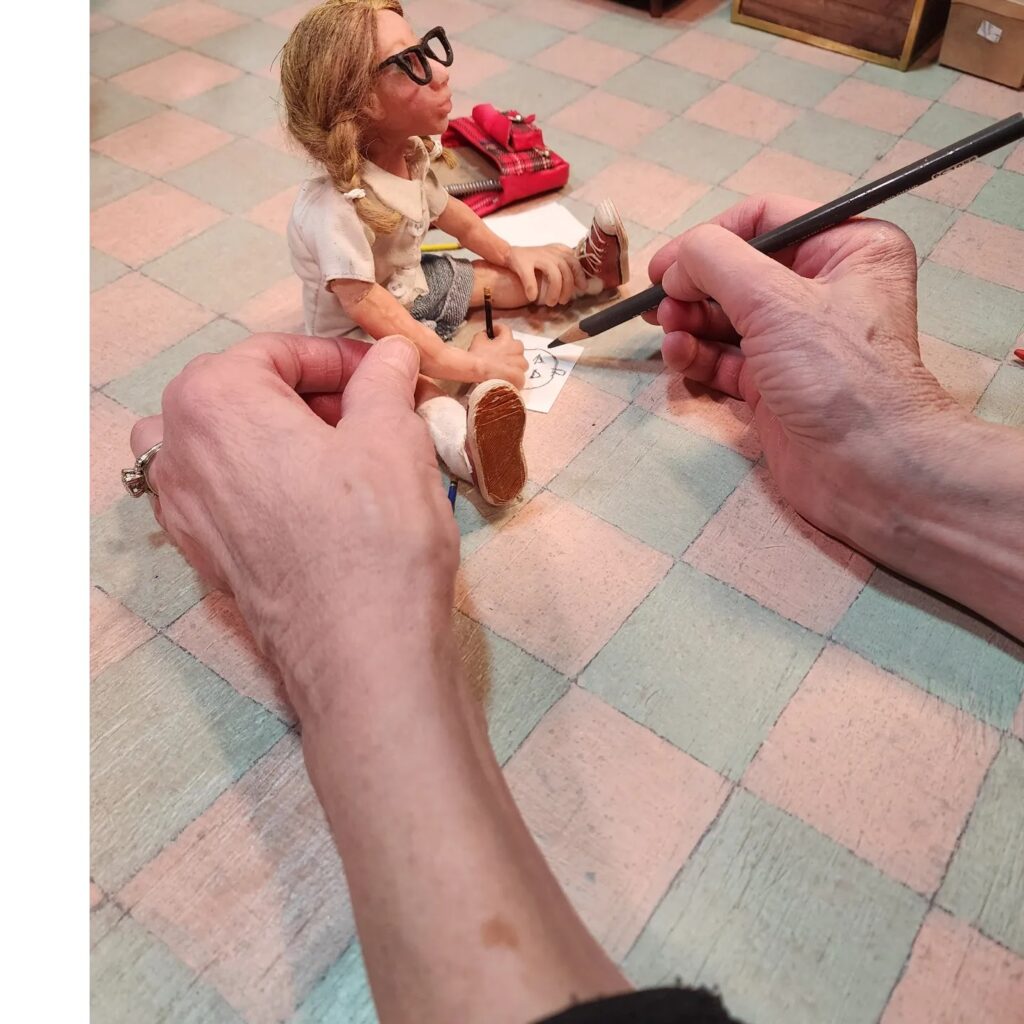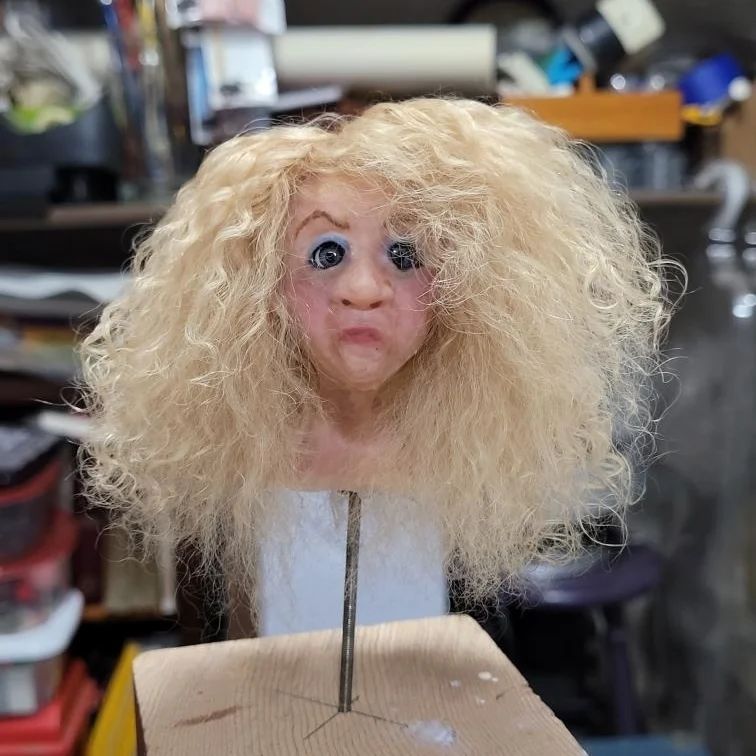Mass Motifs
ART CULTURE HUMOR

Blyth Hazen & Ruth Bauer Create
Big Sky
Story by Bette Keva
photos by
Blyth Hazen













Artists Blyth Hazen and Ruth Bauer are “escaped Texans” whose deep roots in the state brought them together to collaborate on Big Sky, a mesmerizing stop action animation capturing a formative chunk of time in their youth.
When the pair met teaching at Montserrat College of Art in Beverly, their shared histories gave birth to the project that has consumed them and scores of their students for the past four years. They’ve just completed “Big Sky Episode 1,” a remarkable feat of animation they released at Montserrat’s first floor gallery on Cabot Street in Beverly in mid-April.
The six-minute video opens with Lil’ Ruth, seven- or eight-years old, with strawberry pig tails, speaking to the camera while a hazy tree in the background gradually comes into focus with her words. Lil’ Ruth’s large, expressive eyes are peering through over-sized glasses. She relates how her new pair of glasses has revealed the world to her, including leaves on trees which, before glasses, was a big green blob and are now seen as individual lush, green leaves. It’s a beautiful new world that she is eager to explore out doors, but first, she must accompany her mother while she gets regular beauty treatments at Edna’s Hair Salon.
Lil’ Ruth sits on the floor of the salon drawing pictures, much as the budding artist, Blyth Hazen, did in her native Bryan, Texas. Lil’ Ruth’s nascent talent isn’t recognized as shop owner, Edna, with a mean, piercing stare, holds Lil’ Ruth in undisguised contempt. When Lil’ Ruth’s mother is under the dryer and fast asleep, Edna grasps Lil’ Ruth by the arm and ushers her into the back room where she fills her with frightening thoughts about Satan and how the devil walks the earth, including right here in Bryan. Her words are punctuated by a camera shot of Edna’s white go-go boots stomping across the tile floor. Lil’ Ruth is frightened but smart enough not to accept Edna’s worldview.
Blyth Hazen, Ruth Bauer and their student interns are now in pre-production for Episode 2, in which Lil’ Ruth heads to west Texas with her family during the summer of 1968. It reflects the year when Bauer and her family lived in a motel in Fort Stockton while her father worked for the oil industry.
“The summer brings all sorts of discoveries: the endless sky, the softness of horned toads and the complexity of scorpions. These are what Lil’ Ruth finds beautiful,” said Bauer. “We did live in a motel during the summer when I was seven or eight, the Silver Saddle Motel. It was awesome with a soda machine, a pool, and out back, nothing. Off you went looking for bugs and lizards. The motel owner’s teenage daughter, the same age as my sister, was vying to be Miss Fort Stockton. I honestly just didn’t get it.”
The project was in its beginning stages when Covid struck. It forced the team to work alone or occasionally together masked up. With Montserrat closed, Hazen delivered material to students by car and mail.
As part of their internship, students helped create the puppets, did research as to what the style of hair, clothing and home furnishings were current in the mid-sixties. They experimented with different hairstyles.
“Students did research on hands using a mold-making process,” said Hazen. “We all had to learn it.”
Hazen and Bauer are the writers, art directors and animators. Hazen does the camera work and armature rigging and molds casting. Bauer is credited with characters, costume design, hairdresser and scenic background. The production includes an original song, voice acting and interns involved in storyboarding, sculpting, set and props, 3D modeling and postproduction.
The realistic hair salon in miniature with posters on the walls (even a pervasive Texas cockroach clicks its way across religious-themed posters as its antennae twitch,) was the work of much research of the period coupled with Hazen’s memories of the dreaded salon.
Why use stop action animation—a labor-intensive process of moving an object a millimeter, taking an individual photo at each movement (24 frames per second), adjusting the light or camera angle, moving the object another millimeter, taking another photo, etc., —when modern technology has brought us computer animation and Computer-Generated Imagery as the dominant special effect in movies. That Hazen and Bauer chose the technique created in the mid-1800s where one frame at a time is photographed, where miniature sets and puppets are hand-built and every shot is lit and directed speaks to their dedication to the art form and to inspiring the next generation of artists.
“I believe as strongly in nurturing young artists as in making art,” said Bauer.
Undaunted by the scale of the project (“I’m in no rush,” said the unflappable Hazen) nor of experimenting to learn what they didn’t know, the pair and their Montserrat interns are deep into Episode 2 where topics of beauty, gender roles and racism are explored.
“These are things Blyth and I both grappled with as kids,” said Bauer.
The summer of 1968 was tumultuous in America, Bauer recalled. “There was lots of violence. Martin Luther King and Bobby Kennedy were assassinated. There was the Democratic National convention and riots. Edna planted this idea of ‘evil,’ but Lil’ Ruth comes to her own conclusion of what evil is.”
The work is done primarily in Hazen’s cellar workspace. There is no budget, said Hazen, who is also donating the use of her own equipment and tools. Working together throughout COVID, Bauer would sculpt a character’s head out of plasticine then Hazen would make a mold of it. Then it would be cast in silicone. Bauer painted the heads and designed the look of the characters. “I’d done a lot of hair punching. We get yak hair that’s punched into silicone heads such as Edna’s extravagant hairdo; I shape it into how it’s going to look. I’ve done some costume work. We have an intern, who has great tailoring skills.
“Blyth did 3D printing and props on the set. She’s the tech guru managing the Dragon Frame Software. She does the editing and post production. She’s a wizard at that. Interns have jumped on. They connect to the story.
“Blyth is a great collaborator. She has a patient personality. She learned Dragonframe Software. She explains things to me. She’s a really talented artist, educator, very humble and we have the same sense of humor. We’re endlessly amused by the cockroach in the hair salon scene,” said Bauer.
There’s lot of collaboration and team work, otherwise it’d be a ten-year proposition,” said Bauer.
The miniature set created for Big Sky alongside a monitor playing the video will be on display now through May 28 in the Montserrat College of Art Founders Gallery at 248 Cabot St., Beverly.
Click this link to view the Big Sky video online on Vimeo:
https://vimeo.com/930849891/ecac86186e?share=copy
More information about the exhibit, which includes works by Liz Nofzinger and C. J. Karch, is available here: